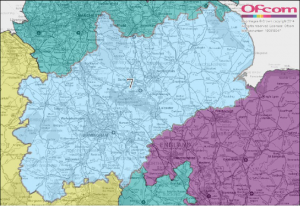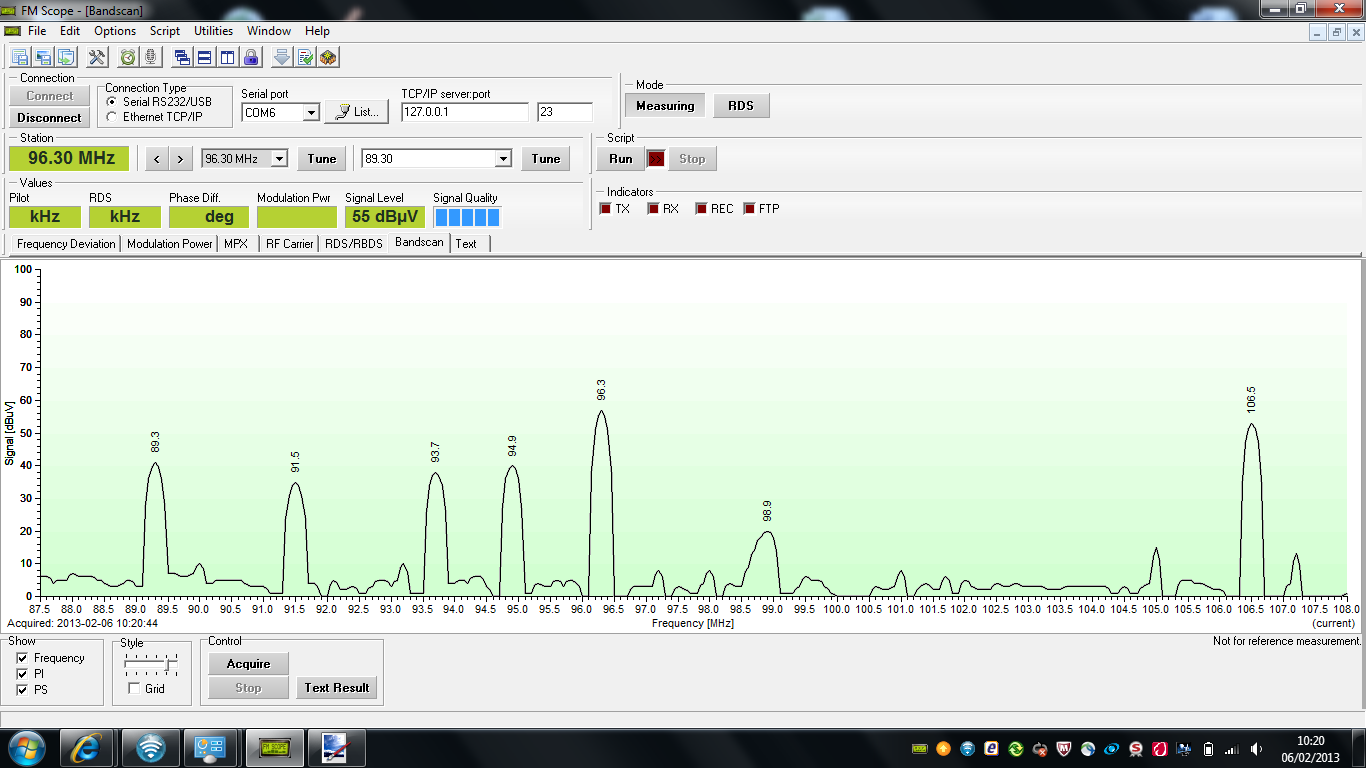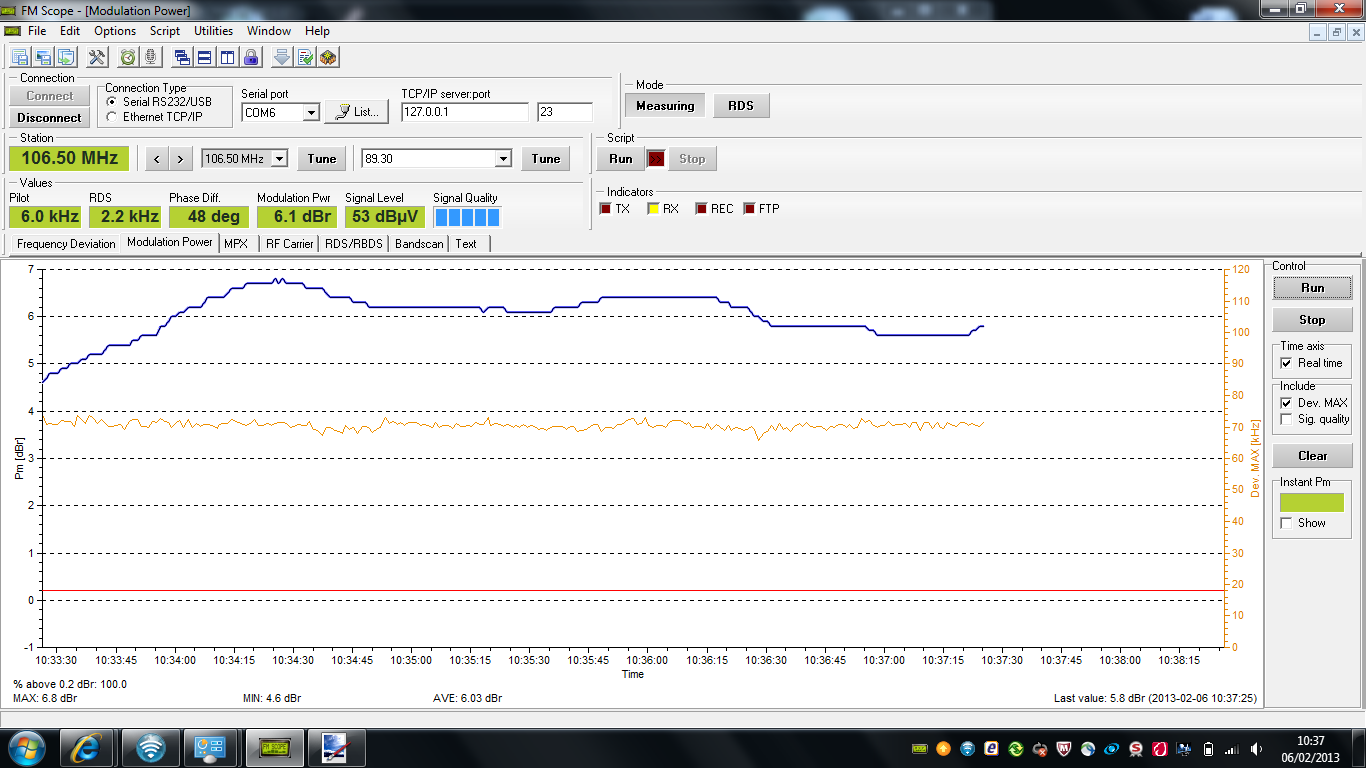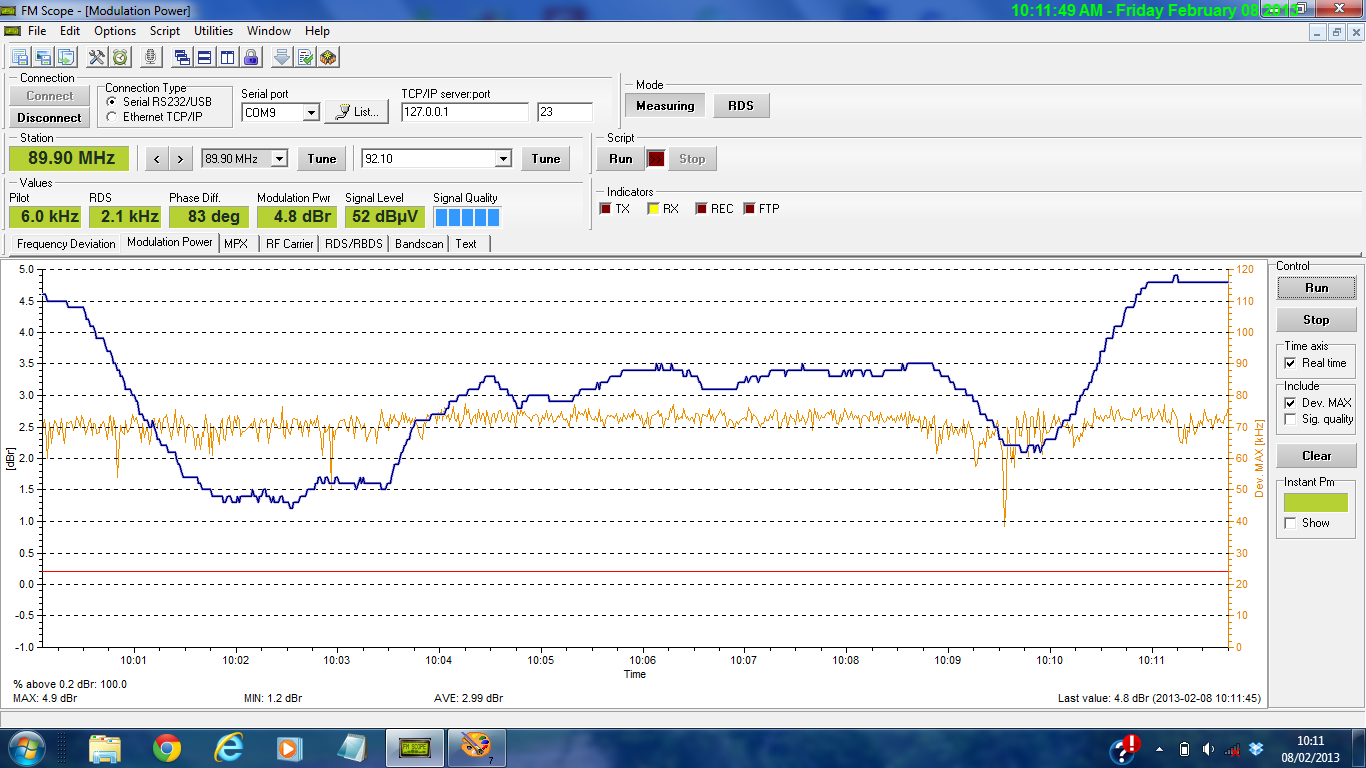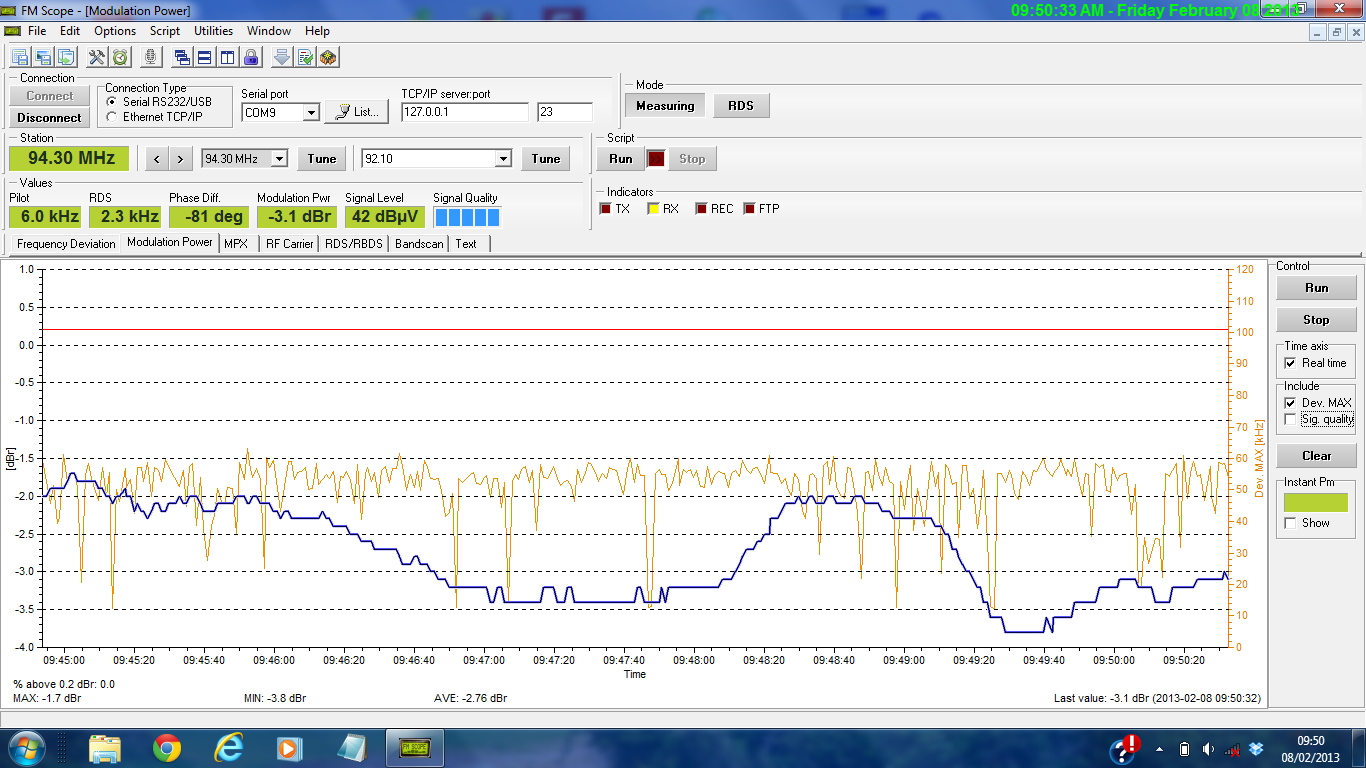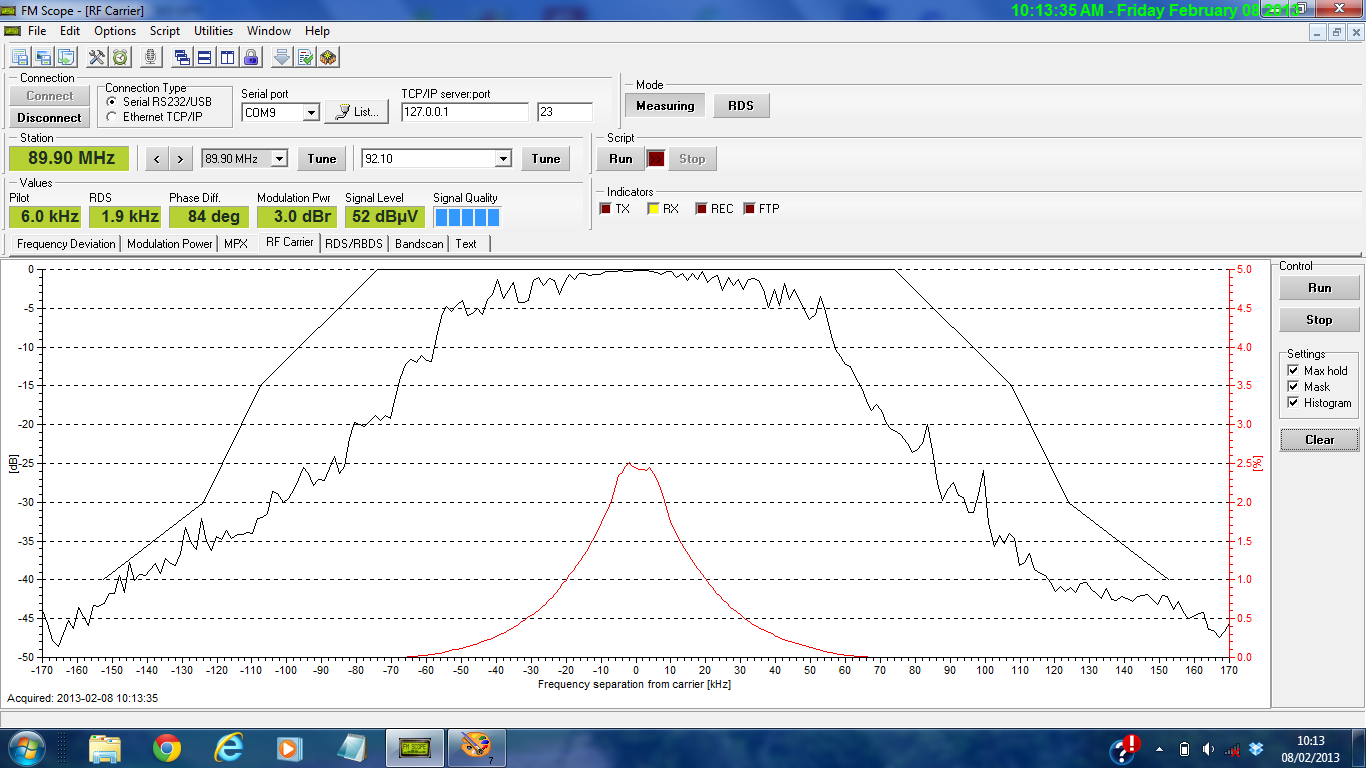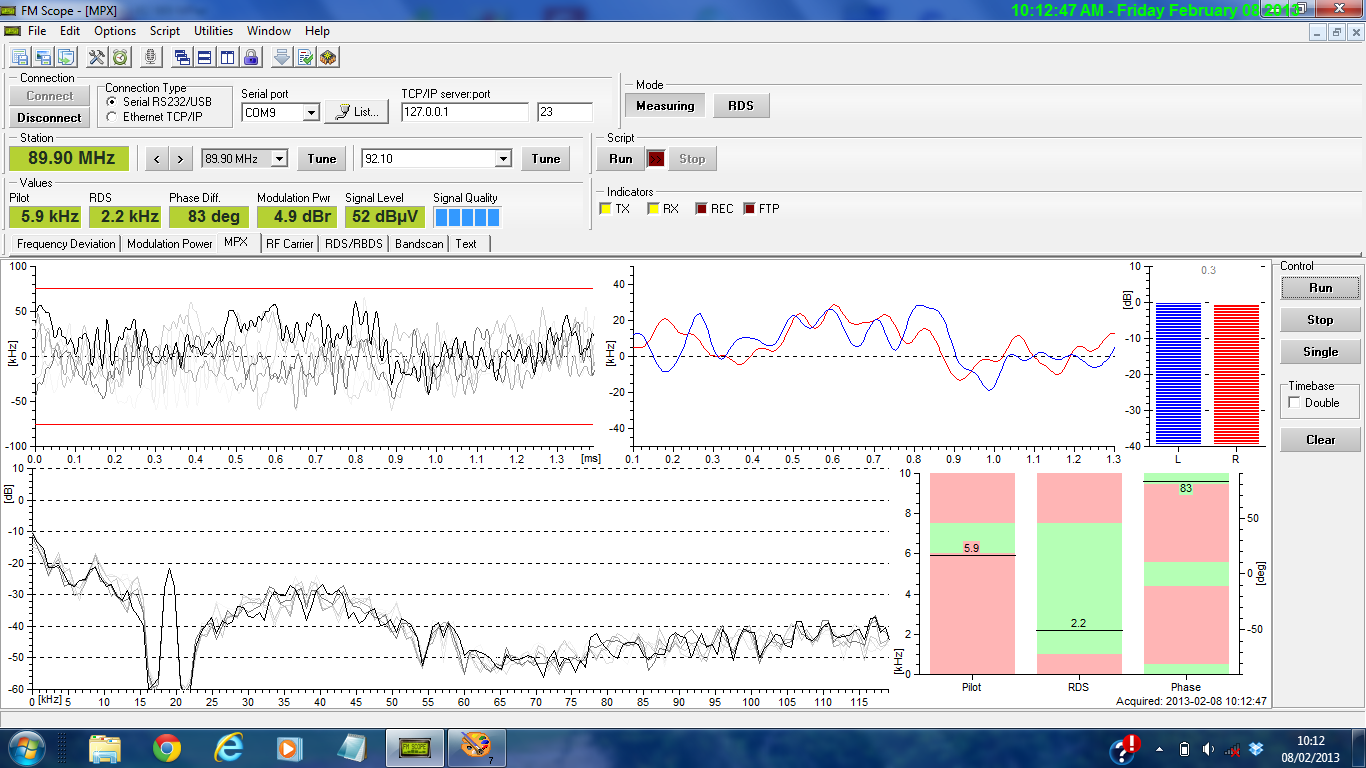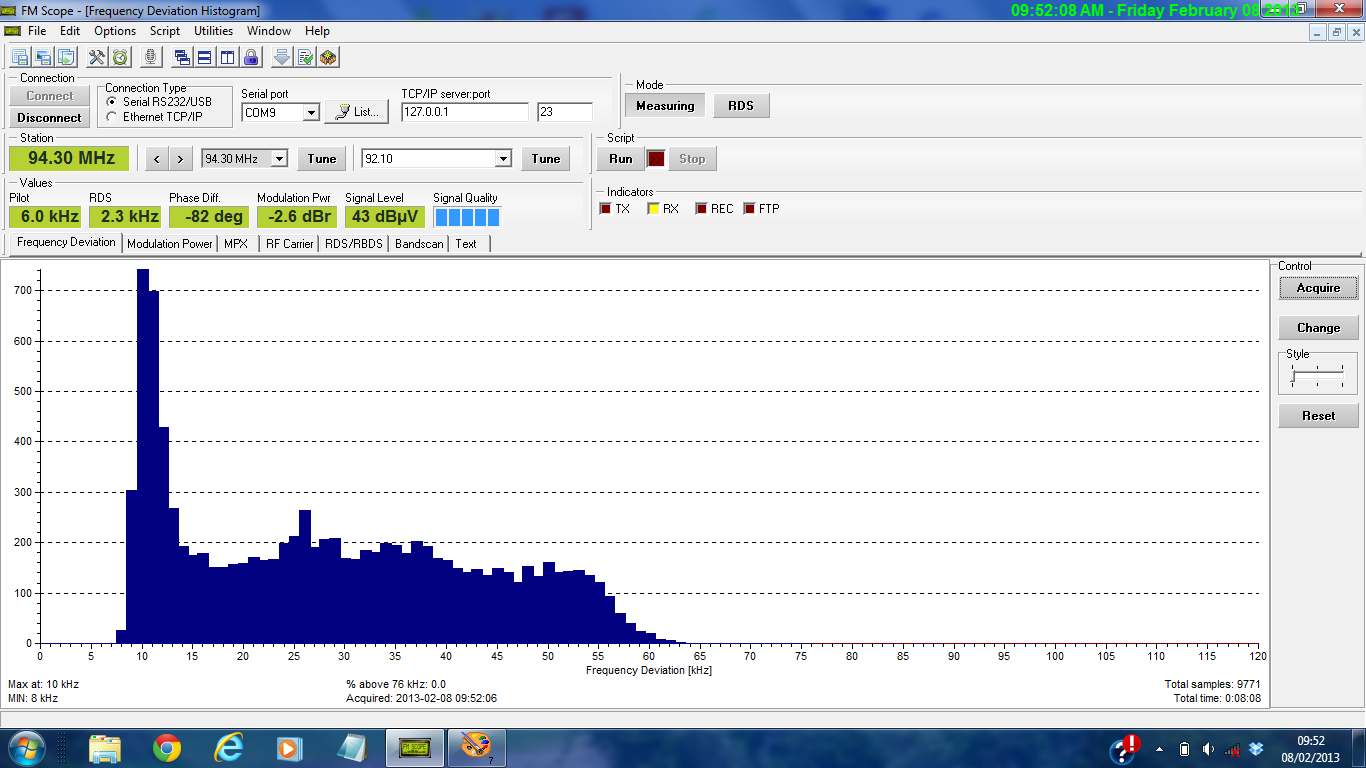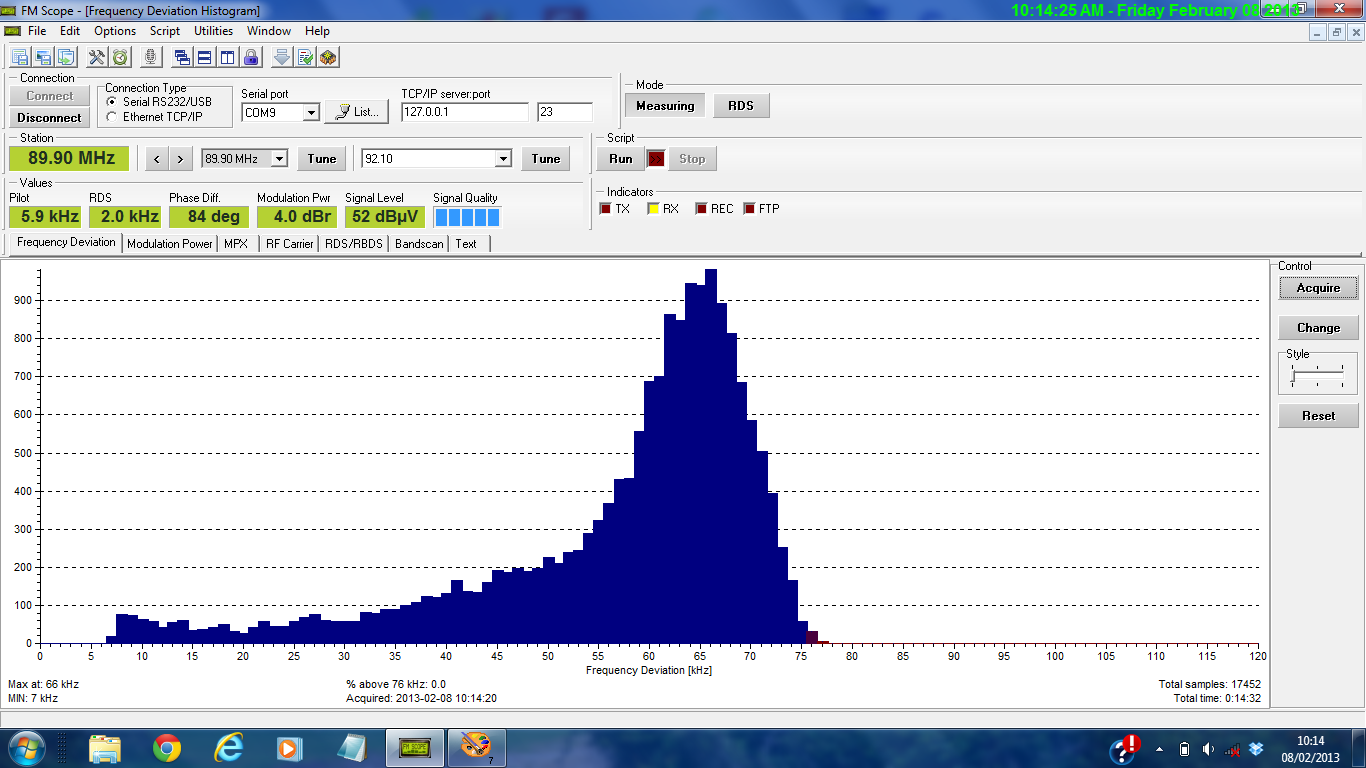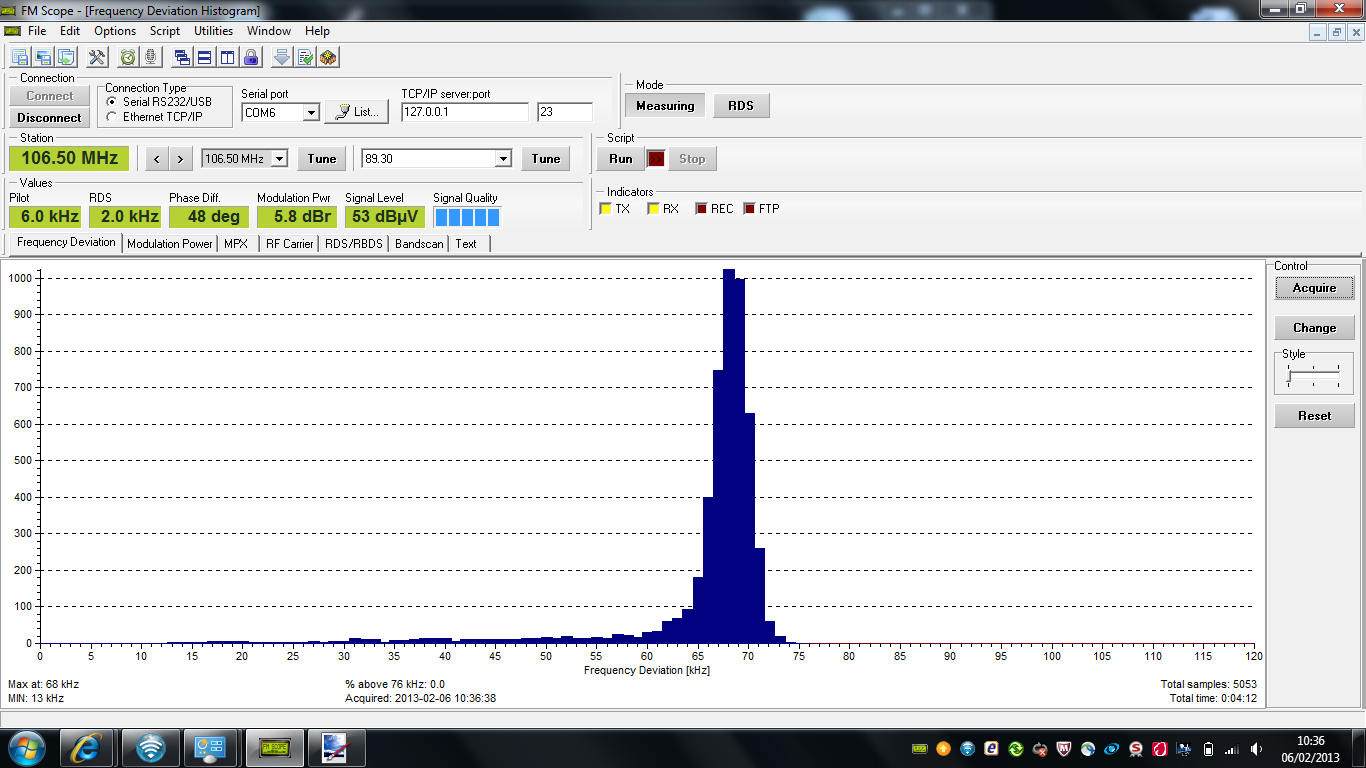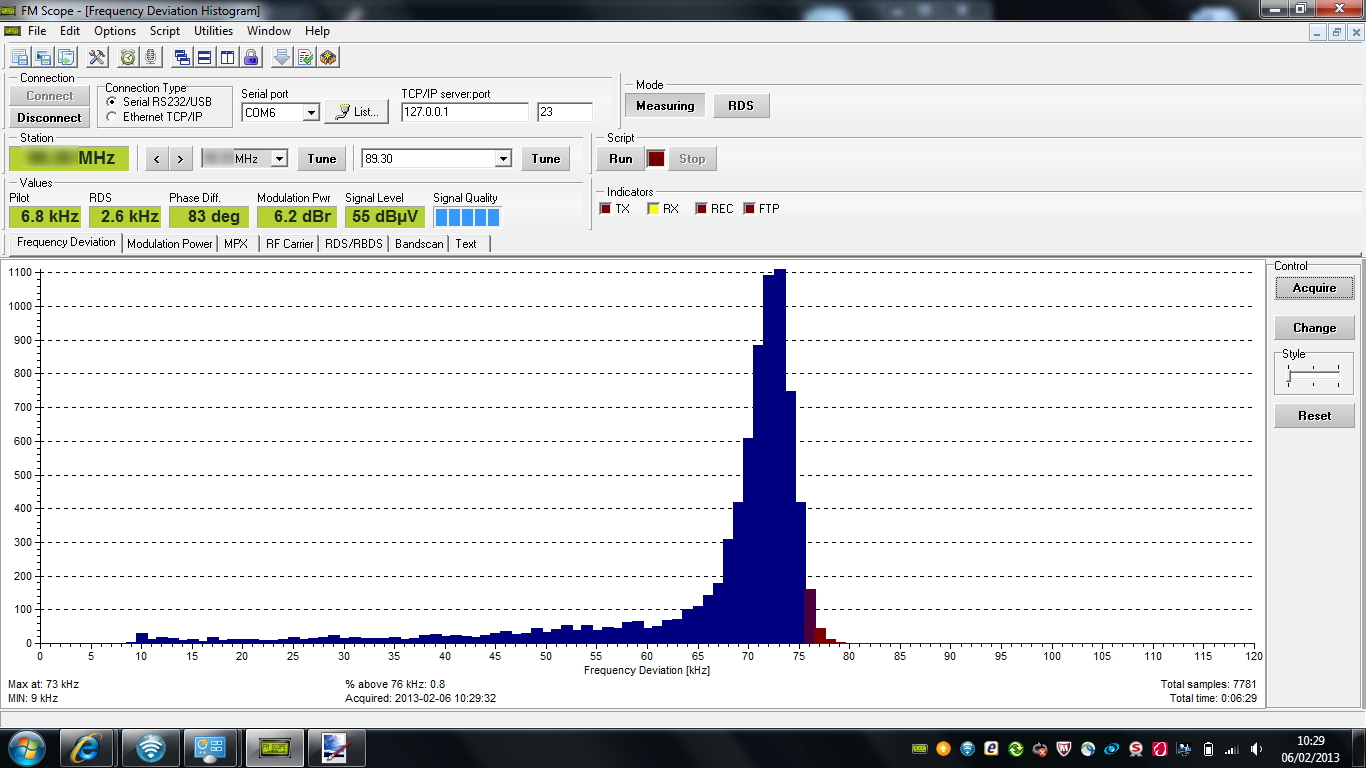Ofcom are on the record stating that there is frequency congestion on the FM Broadcast band in many areas. This can often cause frustration because to the layman it appears that there are plenty of unused frequencies on the dial. The cause of this situation is the technical criteria that Ofcom use for their spectrum planning of this band. There are many criteria, but in this post we focus on just one – the Protection Ratio, and in particular the co-channel (same channel) protection ratio.
It’s a bit of a dry subject, but has profound consequences. Therefore we’ll use pictures and try and short-hand some of the technical language to make it more accessible.
Take by example our local Community Radio station – Bradley Stoke Radio (note we designed and commissioned their transmission system last year). They broadcast with 25 watts on 103.4MHz from a low antenna attached to a community centre in North Bristol. Their coverage area (the standard 54dB?V/m one that BBC and commercial stations use) is illustrated below – it’s that small green blob in the middle.
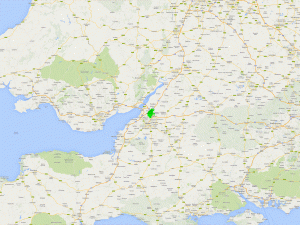
Click to Enlarge. Underlay map by google.com
Now the cynics among you will probably ask why such a big map – perhaps we are trying to exaggerate how small their coverage is – but there is method in our madness – please read on.
The above-mentioned Ofcom technical criteria state (on page 12) that the co-channel protection ratio for stereo services is 45dB. To the layman that’s just a number, but to a radio engineer they think “heck that means the interfering signal has to be 31623 times smaller than the wanted signal to avoid interference half the time!”. Gut feel indicates it can’t be right, but Ofcom cannot plan their spectrum strategy on gut-feel – the figures are based on internationally-recognised recommendations published by the ITU (page 5 of this document). Adding this factor on top of little Bradley Stoke Radio’s signal results in an interference area indicated below.
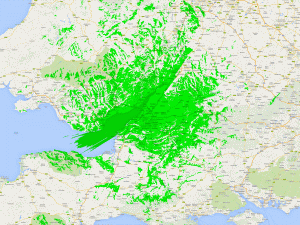
Click to enlarge. Underlay map by google.com
That’s right – according to this protection ratio Bradley Stoke Radio’s lowly 25 watt transmitter effectively sterilises 103.4MHz across large swathes of south west England and south east Wales. So in large areas from the southern edge of Birmingham, to Exeter, and Oxford to Cardiff it is not (apparently) possible to have another FM radio service on that channel. This is borne-out by Ofcom’s actual frequency plan – only 11 transmitters on 103.4MHz across the entire UK.

UK Stations on 103.4MHz – Click to enlarge
This level of re-use is actually slightly above the national average of 9.3 (excluding the heavily under-utilised spectrum territory around 87.5-88.0MHz – presumably to ease the workload of RSL spectrum planning).

UK FM channel re-use – Click to enlarge
To put that in context, each mobile phone network would probably have more than 50 20watt transmitters on the same frequency in Bristol alone and many hundreds across the same area of the UK. However we are not comparing apples to apples there – the frequencies are different, and FM is an old analogue system that, in human terms, should be drawing its pension by now. In contrast mobile phone networks are digital systems that have had over half a century extra human ingenuity in their development. This is a major reason why Ofcom drives “re-farming” of spectrum from old to more spectrally efficient technologies (eg analogue to digital TV)
This is all caused by that 45dB protection ratio for FM. It’s all too easy to stamp our feet and say “it must be wrong” – but as Scottie always said to Captain Kirk – “ye cannae change the laws of Physics“. Nevertheless, there is a worthwhile goal here to achieve more listener choice and greater social gain – so could there be a third way? Associated Broadcast Consultants think there could be – let’s outline a few possible approaches below:-
- Re-study the protection ratios. We think this will not be a fruitful angle of approach. Even with global warming, the laws of physics of radio propagation are unlikely to have changed over the last few decades. True you could look at some of the assumptions (eg: that assumed receiving aerial height is 10m above ground level) – but in reality it could be difficult to get sufficient support to make this happen at ITU, and even if it were possible we’d probably all be pushing-up the daisies by the time the study finished!
- Band Re-plan. An alternative approach is to re-plan the FM band to deliver a small amount of spectrum that is managed with lower protection ratios for use by stations at their own risk. In practice this is not practical – too costly and disruptive to for wholesale frequency and power changes for a band/system with limited life. Maybe if Radio 3 made an early exit from the FM band it could be an option to create a sub-band with tighter re-use of frequencies.
- Consider TSA instead of MCA – Many stations’ Target Service Area (TSA) is smaller than their Measured Coverage Area (MCA). Therefore it seems rather a waste of spectrum to protect incumbent stations’ signals outside of their target area. This approach could allow significantly denser packing of stations on the same channel. Come to think of it, reduced protection may act as a gentle “nudge” to encourage incumbents to transition to DAB should Ofcom want that.
- Review approaches of other regulators – There has been anecdotal evidence that other European regulators take a different approach to the ITU protection ratio recommendations (and other restrictions like the 10.7MHz image channel). We are not aware of evidence of listeners in other countries complaining about FM interference any more than the UK. Therefore we request Ofcom to consult their European colleagues and review what approaches to FM planning are taken in neighbouring countries.
- Pragmatic reduction in protection ratios – For example select a small number of stations that wish to have a power increase. Carefully increase their power and see if there is any impact to the listen-ability of co-channel stations. Most of those “interfered” stations will anyway be benefiting from increased protection since they came on-air because many will have alternative channels that could be used by listeners experiencing difficulties (eg DAB, satellite, DTV, mobile, internet…)
Associated Broadcast Consultants encourage Ofcom to consider options 3, 4 and 5 above. They are relatively small changes that should be within Ofcom’s power to change as part of its’ remit to efficiently manage the nation’s spectrum, and should not require primary legislation.
You are welcome to use the images and text in this post as long as you credit Associated Broadcast Consultants and give a link to this website.
 This is great news for (currently) internet-only station Funky SX who won £50,000 through ITV’s the People’s Millions to establish a youth-led urban and dance music radio station for Southend-on-Sea.
This is great news for (currently) internet-only station Funky SX who won £50,000 through ITV’s the People’s Millions to establish a youth-led urban and dance music radio station for Southend-on-Sea.

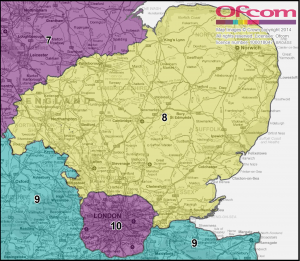







 Photo:
Photo: 